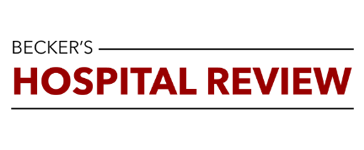Between 2010 and 2021, 136 rural hospitals closed their doors, an average of about 12 a year. In 2020 alone, however, 19 rural hospitals were forced to close, largely due to the COVID-19 pandemic. Rural hospitals have experienced higher material costs, difficulties hiring and retaining staff, and less revenue due to stagnant payer reimbursement rates and reduced capacity to offer revenue-generating outpatient care.
While these challenges persist, opportunities exist to help rural health care systems thrive in this unique environment. With expertise in rural health supply chain needs, Advantus Health Partners has the know-how to support rural health care systems understand these challenges and drive solutions.
Below, Seth Wardell, Executive Director of Sales for Advantus, outlines key challenges rural health systems face and how Advantus can help.
Challenges in staffing “supply” in rural hospitals
While staffing has always been a thorny issue for the rural health care system, the pandemic made things worse. Finding and retaining staff is hard.
“Staffing is the biggest Achilles heel for rural health systems. Most systems pay substantially more to attract and even retain the staff they have,” says Wardell. “I’ve even heard of critical access hospitals in very small towns reaching out to people who used to live in those towns and who went into health care to try convincing them to come back to their hometown.”
In fact, estimates suggest there will be a shortage of about 20,000 physicians in rural areas in the next few years.
Rural Emergency Hospital (REH) designations offer new revenue sources
Rural health systems have always experienced cash flow challenges, though they’ve often found a way to make do with what they have.
“Rural hospitals just don’t have the kind of revenue that a larger, inter-city health system has. They’ve always faced the challenge of having to do with a lot less,” says Wardell. “Rural hospital revenue, unfortunately, won’t organically grow until the surrounding community grows. Until then, there’s a need for rural hospitals to locate new sources of revenue.”
The search for new sources of revenue is especially important as rural hospitals are using more beds for inpatient care due to an increasingly sicker population. This limits the number of beds available for outpatient care, which is a significant revenue-generating service.
Fortunately, new government regulations have created a new hospital classification that could benefit rural hospitals: the Rural Emergency Hospitals (REH) designation.
“The introduction of the REH classification was designed to help facilities, so they don’t have to downsize to obtain that status,” says Wardell. “This is something that immediately impacts a hospital’s bottom line.”
Addressing the high cost of supplies with strategic supply chain solutions
Supply chains account for nearly 40% of a health care system’s overall cost and expenditure, making them an easy target for cost-saving measures. Especially as inflation persists, which keeps prices high, managing external spending while maintaining patient quality of care is key.
Traditional supply chain solutions, such as GPOs, have offered some reprieve from high prices — but it’s not enough.
“GPOs have been pretty effective at fighting inflation because they’ll have a set price in their contract,,” says Wardell.
However, GPO contracts expire every three to five years and need to be renewed, which poses problems for some hospitals.
“For contracts that might be expiring right now, that could be an issue for some hospitals,” says Wardell.
A consolidated distribution model
A consolidated distribution model may offer new supply chain solutions for rural hospitals. This new model streamlines processes by committing to a single product distributor.
“If you can commit to one distributor who has the capabilities to provide your hospital with everything that’s needed, it’s going to give you the most negotiating power to reduce costs,” says Wardell. “Any time you bring a commitment to a supplier, that initiates a discount and savings.”
Implementing a consolidated distribution model, however, can be challenging. There’s a lot to consider.
“One of the biggest challenges to building a consolidated distribution model is choosing the right supplier with the logistical ability to supply you with what you need,” says Wardell. And it’s important to find comparable products if the same product is not available. Rural hospitals may not be familiar with or aware of manufacturers who can provide comparable supplies rather than supplying the same products they’ve used for years.
Advantus: Your supply chain partner
As a leader with health care expertise in supply chain management, we recognize that there’s no one-size-fits-all solution when it comes to finding cost savings through supply chains. We offer personalized solutions to help rural health care systems find savings by connecting them to the right manufacturers to drive savings.
If you’re looking for new ways to innovate your supply chain and initiate cost savings, let’s talk. Contact us today to schedule a free consultation.
Join us for our upcoming webinar with the American Hospital Association!
Bridging the Price Gap in Rural Hospital Supply Chain
How rural and community hospitals can reduce their supply chain costs with more equitable models
Thursday, May 25, 1–2 p.m. EDT
Rural and community hospitals are some of the most underserved when it comes to supply chain operations. The data shows that these hospitals pay about 30-40% more on supply chain costs than an IDN. Rural hospitals are serving critical needs in their communities, and yet they struggle with supply chain pricing and purchasing power. What’s more: Rural hospitals tend to get less support from national GPOs.
But just because this scenario is common doesn’t mean it needs to continue. Dan Hurry, President of Advantus Health Partners, will present solutions for how rural and community hospitals can bridge the supply chain price gap between big and small players by:
- Optimizing their price schedule – take advantage of a “Costco model” where there is one price for all
- Streamlining workflow and staffing – drive decisions for better process design, more efficient product and inventory management, and effective organizational design
- Leveraging technology and insights – Use more than spreadsheets to identify opportunities and find value
As an end-to-end supply chain solutions company, Advantus Health Partners brings forward-thinking solutions that extend beyond traditional supply chain GPO management. Advantus leaders are healthcare operators. They are doers. And they understand the complexity of healthcare supply chain in order to generate more value.
Speaker:
President, Advantus Health Partners










